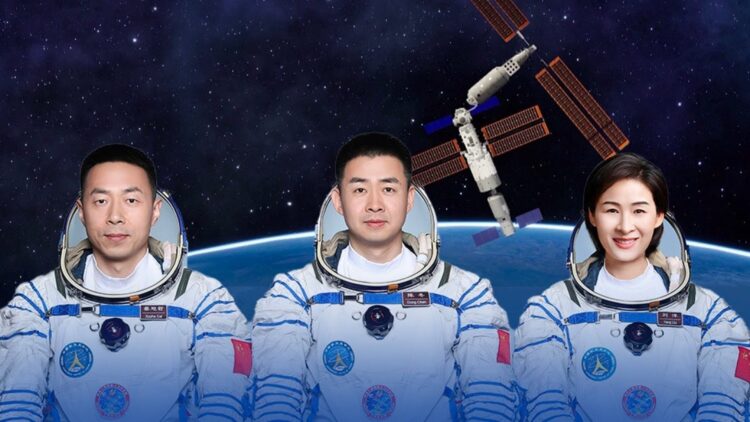In the mid-20th century, a “space race” emerged as a competitive endeavor between the military forces of the United States and the Soviet Union. Now, there are nearly 80 space agencies that exist worldwide, with America maintaining a key role in space exploration. However, they are now encountering competition from China’s “taikonauts,” which could potentially alter this balance of power.
Shenzhou-18: A milestone space mission for China’s taikonauts
On April 25, China launched the Shenzhou-18 manned spaceship, sending three taikonauts (a term referring to Chinese astronauts) on a six-month mission to the Tiangong space station. The spacecraft, launched aboard a Long March-2F carrier rocket from Jiuquan Satellite Launch Center, successfully entered orbit, with all crew members—Ye Guangfu, Li Cong, and Li Guangsu—reported to be in good health.
During their time in space, the taikonauts conducted over 90 experiments, centered around various fields such as microgravity physics, space medicine, and technology. One project involved creating a space “aquarium” with zebrafish and algae in order to study the effects of microgravity on aquatic life, revealing abnormal behaviors such as upside-down swimming.
The crew also developed a “space garden” by planting over 100 Arabidopsis (thale cress) seeds. This experiment was aimed at analyzing the impact of microgravity on plant stem cells and gene expression. After four weeks of growth, the plants were frozen for further research upon their return to Earth, promising insights into cultivation in weightless conditions.
Additionally, taikonauts conducted studies on emergency decision-making to assess cognitive and emotional responses during long missions. They also carried out two spacewalks—setting a record for the longest single spacewalk—as well as performed tasks like retrieving payloads from outside the space station. After 192 days, the crew safely returned to Earth on November 4, landing in North China’s Inner Mongolia Autonomous Region.
Taikonauts’ success signals great benefits
There are significant advantages to the taikonauts’ mission, including:
Advancement of scientific knowledge: By conducting and observing the results of their experiments in space, the crew have laid down the foundation for other researchers to gather crucial data for future long-duration missions and contribute to life and physical sciences.
Strengthening space capabilities: The success of the Shenzhou-18 mission bolsters China’s reputation in space exploration. Achieving milestones such as extended spacewalks and experiments highlights their technological advancements. This paves the way for future missions in China and beyond.
International collaboration potential: Speaking of beyond, there is an opportunity for enhanced international cooperation in space exploration and related research. China working together with other countries could lead to shared knowledge, resources, and more technological advancements. This could foster peaceful collaboration rather than competition.
Implications for America: A new space race
On the other hand, though, this mission may spell bad news for America in this current “space race.” With China’s success, the stakes of international prestige and technological advancement determine how well the US can establish—or reestablish, rather—its dominance in space exploration.
While competition breeds success, it could negatively affect funding, training, and collaboration opportunities. Such pressures may overextend resources, undermining the safety of NASA’s missions as American astronauts try to maintain their edge.
Moreover, China’s advancements could lead to a divided approach in space exploration. Diplomatic complexities may intensify as other nations prioritize their programs over cooperation. As such, astronauts may encounter a more isolated working atmosphere, subsequently reducing the chance for collaborative efforts necessary for future space exploration.
The rise of China’s space capabilities presents both challenges and opportunities. While competition may strain international cooperation, it also opens doors for collaboration that could benefit scientific progress. Indeed, balancing competition with partnership is vital.

